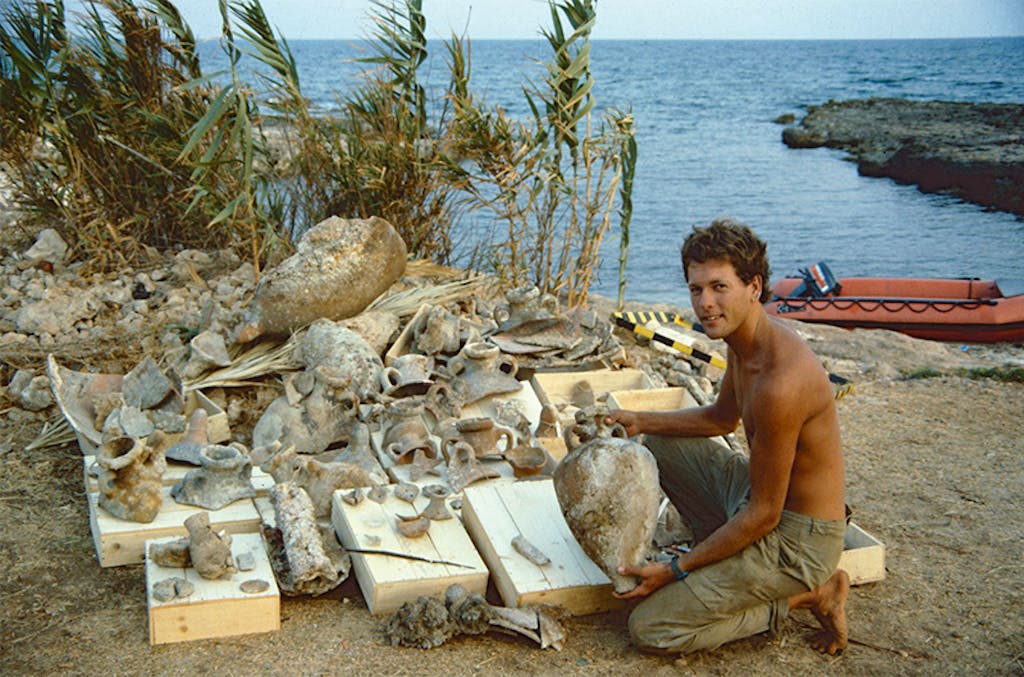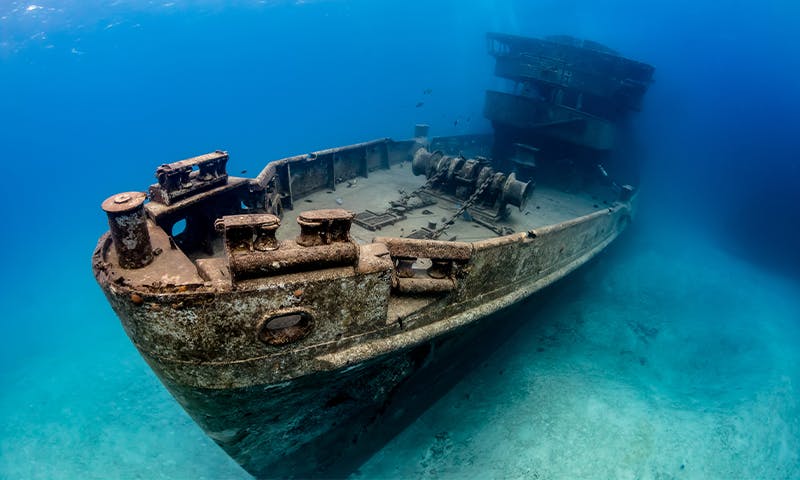1 I didn't realize that archaeology has more relevance to recent history.
In the introduction to my book, A History of the World in Twelve Shipwrecks, I stress that it is a history of the world, not the history; the selection of sites for each chapter reflects my career and interests as an archaeologist. This point may seem well-known regarding the nature of written history, but acknowledging it while writing the book was a revealing experience for me.
At the start of my career, I had a traditional view of archaeology—excavation was about uncovering artifacts that provided insights into periods with limited evidence, usually meaning the older the site, the more worthwhile it was to investigate. For two decades, this guided my research into trade in the ancient Mediterranean and my excavations of shipwrecks containing pottery amphoras, important records of economic activity in the Greek and Roman periods. But since then, I have focused on sites of more recent historic date—from 16th-century wrecks off England to ships from the 19th century in the Great Lakes—and have found my perspective changing.

I realized that there is minimal documentary evidence for ships, even from the 19th century, and that wrecks of any date can yield unique finds. For instance, a World War II wreck nearly 4,700 meters deep in the Atlantic contained a cache of well-preserved letters that could still be read, offering new insights into people’s lives and hopes during a tumultuous time in history. I realized that archaeology remains relevant for sites even just out of living memory.
2 Archaeological projects are ongoing
While researching my book, I was struck by how many excavations continue to be active projects years later due to advancements in archaeological science. Blocks of metal known as ingots from the Uluburun Bronze Age wreck off Turkey, which was excavated between 1984 and 1994, were analyzed for trace elements decades later, leading to a fresh understanding of trade networks in early prehistory. For the Roman Plemmirio wreck off Sicily, also excavated in the 1980s, neutron activation analysis of shards of amphora pottery has pinpointed the source of the cargo to one port on the coast of present-day Tunisia.
I found myself writing about the philosophy of Plato, the medieval libraries of Baghdad …
Research on human remains from King Henry VIII’s flagship the Mary Rose, recovered from the sea in 1982, has provided an unparalleled view of people in the Tudor period, even suggesting that the crew included men of Iberian and possibly North African origin. In another example of a discipline now known as osteoarchaeology, the scientific study of human skeletons excavated from archaeological sites, analysis of bones from King William Island in the Canadian Arctic has provided strong evidence that the men from Sir John Franklin’s lost expedition resorted to cannibalism.
All of these new discoveries became possible because of methods and improvements in analysis that were not available at the time of the first excavations. This supports the idea of keeping artifacts and materials from excavations for future scientific research.
3 Archaeology is not a precise science
Archaeologists have developed a methodical approach to studying shipwrecks due to similarities in the events that led to their creation. These wrecks provide detailed information about specific human activities like maritime trade, transport, exploration, and war. The high level of detail in the data is what makes wrecks valuable for research in areas beyond the maritime context.
In my book, I wrote about Plato's philosophy, medieval libraries in Baghdad, Norse walrus hunters in the Arctic, King Henry VIII’s music, Charles Darwin’s interest in barnacles, and the aspirations of a radio student in India during World War II. Rather than following a formulaic approach, I let myself be guided by what I found interesting. As a result, the narrative reflects my life experiences, with shipwrecks providing a unique insight into the past.
Lead image: Richard Whitcombe / Shutterstock



